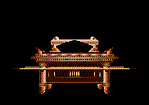
[He. Mashal”proverb” ,pl. “Mishle “Proverbs of”]
Background: The first 9chs. are written as though a father, or perhaps a teacher , is giving advise to a son or a student. After this each verse presents a proverb as we know proverbs today-concise, common sense and often witty statements about wise, successful living. Dominant themes include: poverty, justice, pride, self-control, drunkenness, anger, speaking wisely. 31chs
Author:
*Solomon:1 section (1-9) 2(10-22:16) 3[Not directly ascribed to him (22:17-24:34) 4(25-29) 7(31:10-31)] containing at least 800 of his 3,000 (1K4:32)
*Agur, non-Israelite,5 (30)
*Lemuel (scholar thinks his Solomon) 6(31:1-9)
Date and Location: Solomon reigned 970-930BC. The advisers of king Hezekiah (25:1) would have lived some 200yrs. after Solomon. Dates for the anonymous (unknown compiler, but many of it may have been Solomon’s), Agur, and Lemuel are unknown
Purpose:
*To the simple who have not yet made up their mind between way of wisdom and of folly. It seeks to impart to them the wisdom that comes from the fear of the Lord and to show them how to apply that wisdom to life
Comparison:
The Torah
^Outline god’s laws and specify blessings for obedience and punishment for disobedience; Pr. presents righteous behavior as being in the best kind of life
Job
^Both praise wisdom (1:1-9 Jb28:12-28)
>Both show that wise and righteous people are not always rewarded with health and wealth
Psalms
^Both contrast the righteous with the wicked (Ps1, 37)
^Both emphasize fear of the Lord (1:7; 9:10; 16:6 Ps111:10; 112:1; 128)
Ecclesiastes
*Both praises wisdom (1:1-9 Ec9:14-18)
*Both despise fool( Ec10)
*Both emphasizes fear of the Lord (1:7; 9:10; 16:6 Ec12:13)
*Both certain practical institution (27:23-27; part of Ec5, 7)
*Both affirm that all people are sinners (20:9 Ec7:20)
Abbreviations: Prov./ Pro./ Prv./ Pr.(s)
THE WALKTHROUGH
Proverbs in 7 minutes
MV: 1 Proud look, Pr6:17
Bib1Yr: Mt25,26Kingdom of Betrayers
























